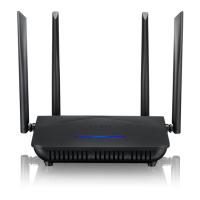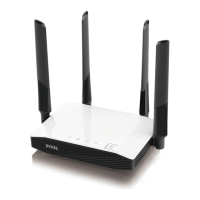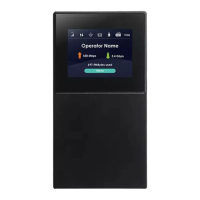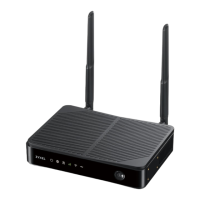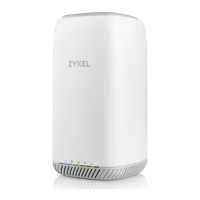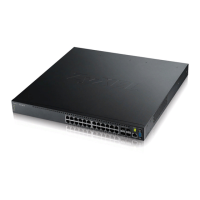Chapter 7 Wireless LAN
NBG4604 User’s Guide
78
7.2 What You Can Do
•Use the General screen (Section 7.4 on page 81) to enable the Wireless LAN,
enter the SSID and select the wireless security mode.
•Use the MAC Filter screen (Section 7.5 on page 87) to allow or deny wireless
stations based on their MAC addresses from connecting to the NBG4604.
•Use the Advanced screen (Section 7.6 on page 89) to allow intra-BSS
networking and set the RTS/CTS Threshold.
•Use the QoS screen (Section 7.7 on page 90) to ensure Quality of Service (QoS)
in your wireless network.
•Use the WPS screen (Section 7.8 on page 93) to quickly set up a wireless
network with strong security, without having to configure security settings
manually.
•Use the WPS Station screen (Section 7.9 on page 94) to add a wireless station
using WPS.
•Use the Scheduling screen (Section 7.10 on page 95) to set the times your
wireless LAN is turned on and off.
•Use the WDS screen (Section 7.11 on page 96) to set the operating mode of
your NBG4604 to AP + Bridge or Bridge Only and establish wireless links with
other APs.
7.3 What You Should Know
Every wireless network must follow these basic guidelines.
• Every wireless client in the same wireless network must use the same SSID.
The SSID is the name of the wireless network. It stands for Service Set IDentity.
• If two wireless networks overlap, they should use different channels.
Like radio stations or television channels, each wireless network uses a specific
channel, or frequency, to send and receive information.
• Every wireless client in the same wireless network must use security compatible
with the AP.
Security stops unauthorized devices from using the wireless network. It can also
protect the information that is sent in the wireless network.
7.3.1 Wireless Security Overview
The following sections introduce different types of wireless security you can set up
in the wireless network.

